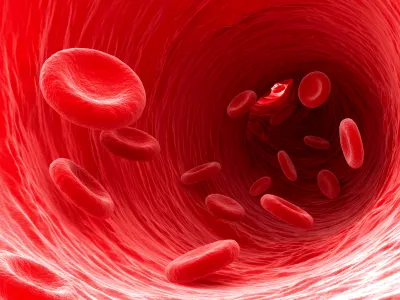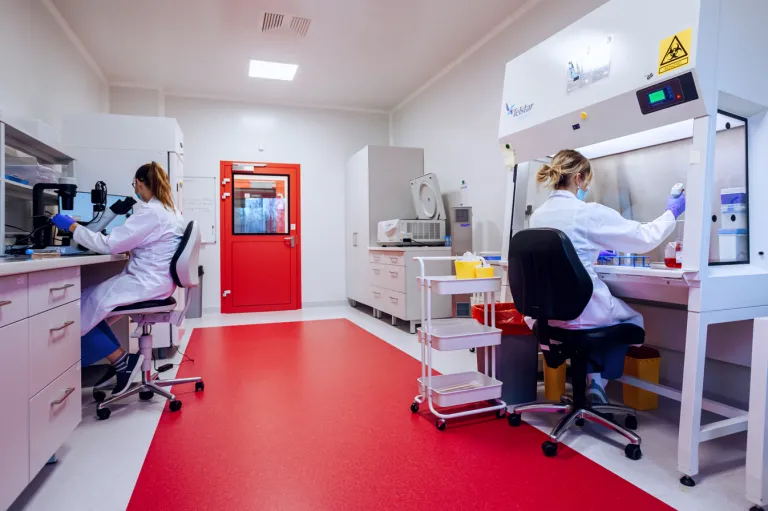Two lines on a pregnancy test is the beginning of one of the most beautiful adventures of your life. Wanting to prepare yourself as well as possible for being a mom, you are exposed to the onslaught of various companies that offer you their products to make your little one's life better. You check reviews about them on the Internet-it's no different with cord blood. But is the Internet a source you should 100% trust?
We live in a time when progress overtakes thought. What matters is not just the value of the information, but the speed with which we obtain it. What’s more, we want more and more of them to drown in the information noise at the end. Many decisions influenced by articles and opinions from the Internet are wrong, as it simply reproduces existing myths. This is due to the fact that most authors focus on the speed of the information provided, rather than the quality.
The same is true of depositing cord blood in a family bank, or so-called cord blood banking. There are many opinions and articles on the Internet that present extreme viewpoints. So- what is it really like with this cord blood?
1. cord blood is rich in stem cells and can be used for treatment.
TRUE: Cord blood is rich in stem cells, which act as specific carriers of information. Obtained during childbirth, they can be used in life-threatening situations. They are used in the treatment of 80. severe oncological and hematological diseases [podobnie jak komórki macierzyste szpiku]. Note, this does not mean that we always cure every disease with cord blood cells. They are like a medicine to help us in a difficult situation. This will not always be the case, but it is better to have medicines on hand in case of need than not to have them. The same is true of cord blood in the bank.
2 The child will not need its stem cells from cord blood.
FALSE: Cord blood stem cells can be used to treat both the child from whom they were taken and their siblings. In Poland, cord blood stem cells are used not only to treat hematological diseases such as leukemia, but also autism and cerebral palsy. What’s important: the latest data indicate that the probability of being treated with stem cells during our lifetime is 1 in 100. This is more than in cases of diseases for which children are vaccinated-pneumococcus, rotavirus or meningococcus.
3 The number of cells collected from cord blood is sufficient for transplantation in a small child, but for a larger child there will be too few for successful transplantation.
FALSE: Of course, the more blood we have – the better. Average portions of cord blood (60-80 ml) are sufficient for 40-50 kg children. However, there are portions for people weighing more than 80 kg, and there are some that are actually very small. However, even such relatively small portions cannot be discarded, because in clinical practice, a possible shortage of cells can be remedied by using cell multiplication techniques or by supplementing cells from other sources – for example, from the umbilical cord taken along with cord blood.
4. in the world/west there are public cord blood banks and in our country it is pure commercialism and you have to pay for it.
FALSE: Both public banks and family banks operate everywhere. Their operating principles differ in that by banking as a family, you incur the cost of banking, but you also gain material to treat for your family’s needs. By banking publicly there is no cost, but we relinquish the right to the material obtained [tak jak w honorowym krwiodawstwie]. Importantly: if we donate blood for public use, we do not have priority at all to use the material – the well-known “queue principle” from transplantology is at work here – whoever applied earlier has a better chance of receiving the material.
5. in the procedure for the collection of cord blood, the child is deprived of the opportunity for the blood pumped between the baby and the placenta to enter the young organism just being born in the greatest possible quantity
FALSE: The procedure of collecting cord blood does not affect the course of labor. It is safe for both Mother and Baby. Blood is taken when the baby is already separated from the umbilical cord, and what is biologically unnecessary is taken.
6. Stem cells are not used in treatment in Poland. One has to go abroad-and this is not reimbursed.
FALSE: Cord blood stem cell transplants are used as a standard treatment for more than 80 serious diseases. It is difficult to have any doubts here. By the end of 2016, dozens of cord blood stem cell transplants had been performed in Poland, most in children. Centers that deal with stem cell transplantation in children are those in Lublin, Bydgoszcz, Wroclaw, Poznan or Krakow. In developed countries such as the United States and Japan, more than half of stem cell transplants in children are cord blood stem cell transplants. Polish transplantology still has a long way to go to achieve these results, but it will not succeed when there is nothing to transplant because cord blood is not banked.
The standard stem cell transplant procedure is a reimbursable procedure. Only non-standard forms of cell treatment are not reimbursed, i.e. Treatment of multiple sclerosis, amyotrophic lateral sclerosis or muscular atrophy. However, they too are already being performed in Poland.
If you have doubts about obtaining cord blood-or this article has not allayed your concerns-your best bet is to talk to your midwife or pregnancy doctor.
You can talk to the banks (some allow you the opportunity to consult a doctor), be critical, check and inquire, read the contract and finally SOMEONE make a decision, because it is your children who may or may not benefit from it.
You can also find more information at www.krewpepowinowa.pl
Rate this article:










